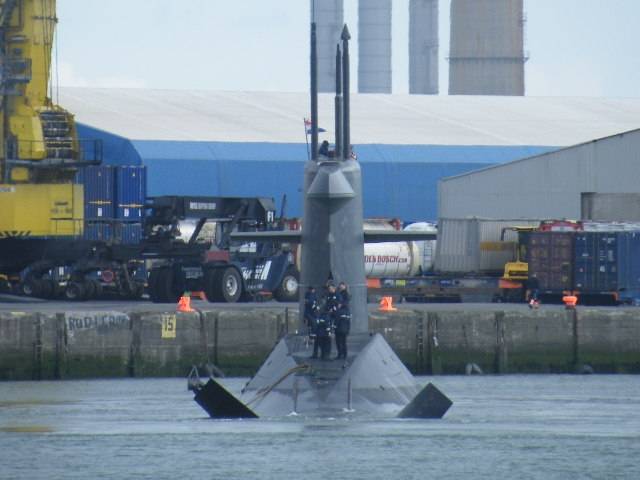#NATOsub - Belgian Navy vessels are visiting Dublin Port over this May bank holiday weekend. They follow calls from two other members of NATO, France and Netherlands whose non-nuclear powered submarine HNLMS Walrus features an unusual stern design as explained below, writes Jehan Ashmore.
Beginning firstly with the Belgian trio, they are BNS Godetia, an auxiliary command and logistical support ship, BNS Lobelia a ‘Tripartite’ class minehunter and BNS Pollux a patrol vessel. Unlike the Dutch and French navies, they are berthed much closer to the city centre along Sir John Rogersons Quay.
It was on Wednesday that the Royal Netherlands Navy submarine HNLMS Walrus (2,650 tonnes when submerged) made a lunchtime departure from the port’s Alexandra Basin.
What makes the ‘Walrus’ class (equipped with almost 40 torpedoes), more unusual to other submarines, is instead of a cross-shaped assembly of stern diving planes and rudders, they mount four combined rudders and diving planes in an "X" tail configuration (see photo above).
The 68m long submarine draws a draft of 7.5m and was built by the Rotterdamsche Droogdok Maatschappij (Rotterdam Dry Dock Co). In 1979 a serious fire delayed the construction of the submarine and the commissioning into service finally took place in 1992.
Also departing on Wednesday was the French Navy auxiliary tanker, Var, that berthed opposite the submarine on the south quays.
This left the second French caller, the destroyer, Cassard to remain in Alexandra Basin until a farewell from the capital on the following day.
































































